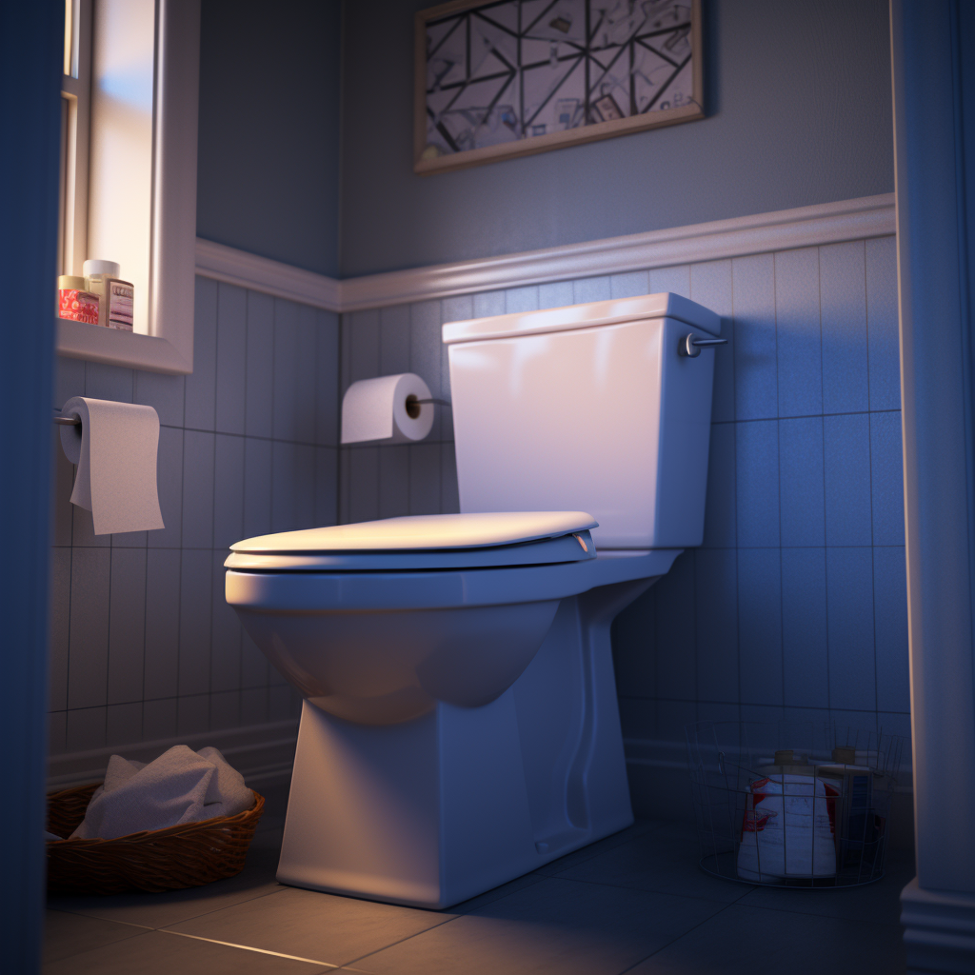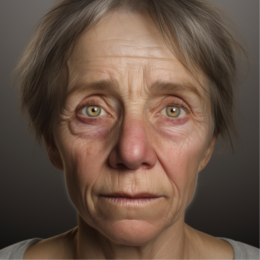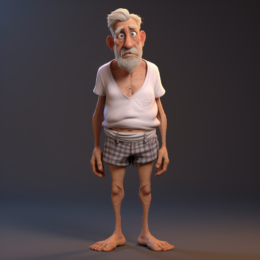What Is Urinary Incontinence?

We thought you might like these too:
- Caring for Someone with Multiple Sclerosis (All You Need to Know)
- Understanding the Symptoms and Dangers of Dehydration in Elderly Individuals
- What Is Morbid Obesity: Understanding, Treating, and Preventing A Severe Health Condition
- Why Do Seniors Have Trouble Swallowing?
- What Causes Multiple Sclerosis?
Imagine this: You’re at a bustling party, enjoying a delightful conversation with friends. You feel the need to sneeze and… oops! There’s a little more than just a sneeze. That’s right, we’re diving into the world of urinary incontinence, something many of us have experienced but few are comfortable discussing. Enter Ella, our 67-year-old heroine who has faced her share of “oops” moments. Let’s traverse this journey with her and discover the reality of urinary incontinence.
What Is Urinary Incontinence?
Urinary incontinence isn’t just about those “oops” moments. It refers to any involuntary loss of urine. While it’s more common among older adults, it can affect anyone at any age.
Statistics:
- Approximately 1 in 3 women will experience urinary incontinence at some point in their lives.
- Men are less prone, with about 1 in 10 reporting symptoms.
Survey
Urinary Incontinence in the Elderly
Ella, like many others her age, noticed a few changes as she grew older, one of which was urinary incontinence. Urinary incontinence in older adults is common but not a natural part of aging.
Statistics:
- About 50% of older adults living at home experience urinary incontinence.
- The rate jumps to 75% among those in long-term care institutions.
Symptoms of Urinary Incontinence
Ella often shared her experiences, hoping to find others who understood. These are some symptoms she and many others experience:
- Occasional leakage when coughing or sneezing.
- A sudden urge to urinate that’s hard to control.
- Frequent, uncontrollable urination.
Causes of Urinary Incontinence

Temporary Causes
Sometimes, the causes of urinary incontinence are transient and can be easily reversed. These temporary causes can affect anyone, irrespective of their age or gender, and understanding them can be the key to timely intervention:
- Urinary tract infections (UTIs): Infections can irritate the bladder, leading to strong urges to urinate. This is often accompanied by pain, discomfort, or a burning sensation during urination.
- Constipation: The rectum and bladder are close neighbors. When the rectum is full of stool, it can push against the bladder and urinary tract, leading to increased urgency or even obstruction.
- Medications: Certain drugs, especially diuretics, blood pressure medications, sedatives, muscle relaxants, and a few others can either increase urine production or weaken bladder control mechanisms.
- Overhydration: Drinking an excessive amount of liquids in a short period, especially beverages with caffeine or alcohol, can temporarily overwhelm the bladder’s capacity.
- Bladder irritants: Some foods and beverages can irritate the bladder. These include spicy foods, carbonated drinks, artificial sweeteners, and citrus fruits.
- Decreased mobility: Temporary periods of limited mobility, perhaps due to surgery or an injury, can make it challenging to reach the bathroom in time.
Persistent Causes
While some causes of urinary incontinence are temporary and reversible, others are more lasting in nature. These persistent causes can sometimes be managed, but they are often part of chronic conditions or long-term changes in the body:
- Pregnancy and childbirth: Pregnancy puts added pressure on the bladder. Childbirth can weaken pelvic floor muscles and damage bladder nerves, especially if it involves prolonged labor or forceps delivery.
- Menopause in women: Decreasing estrogen levels during menopause can lead to the thinning of the bladder lining and a reduction in the muscular strength of the urethra, increasing the risk of incontinence.
- Enlarged prostate in men: As men age, the prostate gland can enlarge, a condition known as benign prostatic hyperplasia (BPH). This can compress the urethra and affect the flow of urine.
- Aging muscles of the bladder: Over time, the muscles of the bladder wall can weaken, reducing the bladder’s capacity to store urine and leading to overactive bladder symptoms.
- Neurological disorders: Conditions like Parkinson’s disease, multiple sclerosis, spinal injuries, and strokes can affect the nerves that control bladder function, leading to different forms of incontinence.
- Bladder cancer or bladder stones: These conditions can cause irritation or obstruction, leading to incontinence.
- Obstruction: A tumor anywhere along the urinary tract can cause incontinence by blocking the normal flow of urine. Other obstructions can arise from kidney stones or an enlarged uterus during pregnancy.
- Pelvic organ prolapse: This occurs when the bladder, uterus, or rectum slides into the vagina due to weakened pelvic muscles. This displacement can cause incontinence.
When to See a Doctor?
Ella waited longer than she should have to see a doctor. But when should one ideally consult?
- When symptoms disrupt daily life.
- If there’s a sudden onset of incontinence.
- If there’s blood in the urine.
Risk Factors
Understanding the risk factors can help you gauge your susceptibility:
Demographics:
- Age: Urinary incontinence in older adults is more common.
- Gender: Women are more likely to have stress incontinence due to pregnancy, childbirth, and menopause.
Health Conditions
Various health conditions, both temporary and chronic, can influence the onset or exacerbation of urinary incontinence. Recognizing the interplay between these health conditions and urinary symptoms can be instrumental in seeking the right interventions:
- Obesity: Carrying excess weight increases pressure on the bladder and surrounding muscles, weakening them and leading to leakage, especially when coughing or sneezing.
- Diabetes: Elevated blood sugar levels can cause increased urination and potentially lead to nerve damage (neuropathy), affecting bladder control.
- Neurological conditions: Disorders like multiple sclerosis, Parkinson’s disease, and spinal cord injuries can interfere with nerve signals involved in bladder control, leading to urgency or overflow incontinence.
- Bladder or urinary tract infections: These infections can cause symptoms of urgency, frequency, and sometimes even incontinence.
- Chronic kidney disease: In advanced stages, kidney disease can lead to increased nighttime urination and, in some cases, incontinence.
- Interstitial cystitis: Also known as painful bladder syndrome, this chronic condition can mimic the symptoms of a urinary tract infection, causing pain and frequent urination.
- Prostatitis: Inflammation or infection of the prostate gland can cause pain or discomfort and symptoms of urinary incontinence in men.
- Stroke: Strokes can interfere with the ability to sense the need to urinate or to control the bladder muscles.
- Dementia and Alzheimer’s: Cognitive impairments can make it challenging for individuals to recognize the need to use the restroom or locate it in time.
- Chronic lung disease: Conditions such as asthma or chronic obstructive pulmonary disease (COPD) can produce frequent coughing, increasing pressure on the bladder and potentially leading to stress incontinence.
Lifestyle
The choices we make in our daily lives, from what we consume to our physical activities, can have a significant impact on bladder health. Here’s a deeper dive into how lifestyle factors play a role in urinary incontinence:
- Smoking: Nicotine can irritate the bladder, and chronic coughing associated with smoking can put persistent pressure on pelvic muscles, leading to stress incontinence. Additionally, smoking is a known risk factor for bladder cancer, which can cause incontinence symptoms.
- Excessive caffeine or alcohol intake: Both caffeine and alcohol are diuretics. This means they can increase urine production and potentially overstimulate the bladder, leading to urgency or frequent urination.
- Physical inactivity: Lack of regular exercise can lead to weight gain and reduced muscle tone, including in the pelvic region, increasing the risk of incontinence.
- Diet: Consuming spicy foods, citrus fruits, tomatoes, and carbonated drinks can irritate the bladder in some people, causing symptoms of urgency and frequency.
- Fluid intake patterns: Drinking large quantities of fluids in a short time or consuming fluids just before bedtime can overwhelm the bladder’s capacity and lead to episodes of incontinence.
- Chronic straining: Regularly straining during bowel movements (often due to constipation) can weaken pelvic floor muscles, making incontinence more likely.
- Occupational factors: Jobs that involve heavy lifting on a consistent basis can strain pelvic muscles over time, increasing the risk of stress incontinence.
- Prolonged use of bladder catheters: Long-term catheter use can lead to loss of natural bladder function and increased risk of urinary tract infections.
- High-impact sports: Regular involvement in high-impact sports without adequate pelvic floor training can strain the bladder and its supporting muscles.
How to Treat Urinary Incontinence?
Treatment for urinary incontinence isn’t just about managing symptoms but improving quality of life. A tailored approach is essential depending on the type and cause of incontinence. Let’s delve deeper into the array of treatments available:
- Pelvic floor muscle exercises: Commonly referred to as Kegel exercises, they strengthen the muscles that help control urination. Proper technique is crucial, and many individuals benefit from consultation with a physical therapist specializing in pelvic rehabilitation.
- Bladder training: This involves gradually increasing the time between urinating to train the bladder to hold urine for longer intervals, reducing the frequency of “emergency” bathroom trips.
- Medications: Several drugs can either relax an overactive bladder or tighten the bladder muscles to reduce leakage. Examples include anticholinergics, mirabegron, and topical estrogen.
- Medical devices: For women, devices like urethral inserts or pessaries can be used. The former acts as a plug to prevent leakage, and the latter supports the bladder to prevent urine leakage.
- Interventional therapies: These treatments can be more invasive but are effective:
- Nerve stimulators: Devices implanted under the skin that send electrical pulses to stimulate the nerves that control the bladder.
- Botox injections: Injected into the bladder muscle, Botox can help relax an overactive bladder.
- Bulking agents: Injected into the tissue surrounding the urethra, these can help keep the urethra closed and reduce urine leakage.
- Surgery: For severe cases or when other treatments aren’t effective, surgical options can be explored:
- Sling procedures: Strips of body tissue or synthetic material create a pelvic sling around the urethra and the neck of the bladder to prevent leakage.
- Bladder neck suspension: This provides support to the urethra and bladder neck, an area of thickened muscle where the bladder connects to the urethra.
- Prolapse surgery: For women with incontinence caused by pelvic organ prolapse, surgery can be beneficial.
- Absorbent pads and catheters: If medical treatments cannot fully prevent incontinence, products such as pads, adult diapers, or catheters can help manage it.
- Lifestyle changes: Often combined with other treatments, changes such as reducing caffeine intake, maintaining a healthy weight, and avoiding heavy lifting can assist in managing symptoms.
Prevention of Urinary Incontinence
Ella’s mantra became “Better safe than sorry.” Some preventive measures include:
- Regular physical activity.
- Pelvic floor exercises.
- Maintaining a healthy weight.
- Avoiding bladder irritants like caffeine.
WHAT MEASURES HAVE YOU TAKEN FOR PREVENTION OR TREATMENT? SHARE YOUR EXPERIENCE.
Conclusion
Ella’s story is just one of many. With a better understanding of urinary incontinence, especially urinary incontinence in older adults, we can approach it with empathy and knowledge.
SHARE YOUR STORIES, ANSWER ELLA’S QUESTIONS, AND LET’S CREATE AN OPEN DIALOGUE AROUND THIS COMMON YET HUSHED TOPIC. YOUR EXPERIENCES MIGHT JUST PROVIDE THE COMFORT OR SOLUTION SOMEONE ELSE IS SEEKING.
References
- National Institute on Aging (2022). Urinary Incontinence in Older Adults. NIH.
- Mayo Clinic (2022). Urinary Incontinence. Mayo Clinic.
- Urology Care Foundation (2022). What is Urinary Incontinence? UCF.





